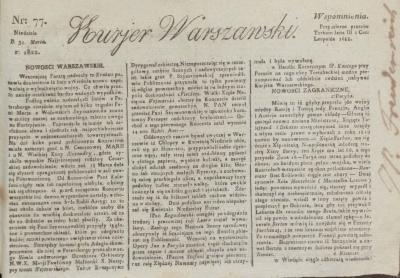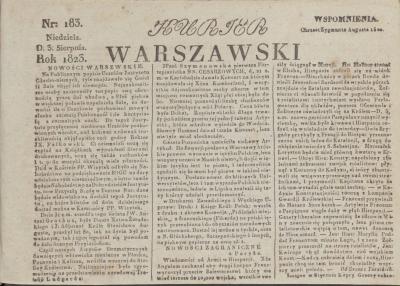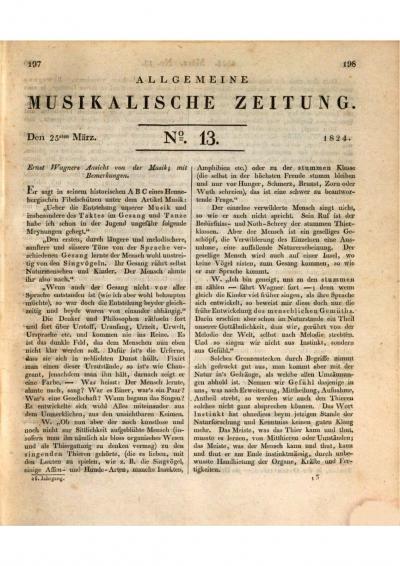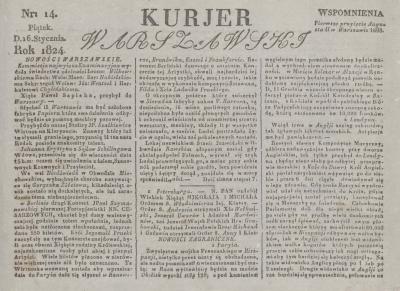Madame Szymanowska and Goethe – a burning love?

In 1887, the lawyer and Goethe researcher Gustav von Loeper published an extensive treatise on the “Trilogy of Passion” in the Goethe-Jahrbuch in Frankfurt am Main, in which he described and analysed the circumstances of its creation, the connection with Szymanowska and her sister, and Goethe’s diary entries.[5] Two years later, the Masurian literary historian Gustav Karpeles dedicated an extensive essay entitled “Eine Freundin Goethes” to the connection between Szymanowska and Goethe in the Neue Musik-Zeitung, which was published in Stuttgart and Leipzig.[6] In his book “Goethe in Polen”, the same author disclosed more quotes from Goethe’s letters to the Weimar State Chancellor Friedrich von Müller in the chapter “Marie Szymanowska und ihre Beziehungen zu Goethe”.[7] Since then, much has been written about the connection between Szymanowska and Goethe, both in Germany and in Poland, in part because letters that had long been overlooked recently surfaced again.[8] It is also interesting to hear which other personalities in Germany Szymanowska was in contact with and where she gave her concerts, and how the German public reacted to her music.
When Maria Szymanowska arrived with her brother and sister in Marienbad, where she registered in the “List of spa guests” under the entry from 8 August 1823 as the “first pianist of her Majesty the Empress of Russia”, (see PDF 1),[9] despite her prestigious Russian accolade and 10-year marriage she was still at the beginning of her international career and was on her first European tour. Born in Warsaw in 1789 as the seventh of ten children of the well-to-do brewery owner Franciszek Wołowski and his wife Barbara, née Lanckorońska, she had her first piano lesson at the age of nine with a certain Antoni Lisowski, switching to Tomasz Gremm after two years. The family regularly had a circle of musicians and literarti as their guests and welcomed to their salon any composers and instrumentalists who were passing through, including Ferdinando Paër, Daniel Steibelt, Pierre Rode, August Alexander Klengel and even Wolfgang Amadeus Mozart with his son Franz Xaver, who gave a concert in the Warsaw National Theatre in June 1819 and wrote a dedication to Szymanowska in her poetry and scrapbook.[10] From 1804, Maria took composition lessons from the German composer from Silesia Joseph/Józef Elsner. From 1805 to 1806, she was a member of a Music Society that Elsner had founded with the German author E.T.A. Hoffmann. In 1809, the twenty-one-year-old gave her first concert in Warsaw before leaving for Paris where she gave concerts in salons. She introduced herself to the Director of the Paris Conservatory, the composer Luigi Cherubini, who praised her playing and dedicated a piano fantasy to her for her scrapbook.
In the same year, she married the estate tenant Teofil Józef Szymanowski, who showed no understanding for her piano playing or for her composing and she tried, in vain, to be interested in the work on his estate. Although he found her public performances indecent, she also managed to make a name for herself in Warsaw. In 1812, the Allgemeine musikalische Zeitung published by the Leipzig music publishers Breitkopf und Härtel reported the following: “Warsaw. There is very little musical news here now; it seems as if the art has been buried. […] The local orchestra is now poorly appointed […] there is little private music […] Of note amongst the pianists are: The wife of Dr Wolff, Mad. Kaminska, Mad. Szymanowska, and Mad. Richter.”[11] In 1811, Szymanowska had twins called Helena and Romuald, and in 1812 her daughter Celina was born, who would go on to marry Poland’s national poet Adam Mickiewicz in 1834. In 1815, she gave concerts during the Congress of Vienna, in 1817 in Dresden, in 1818 in Vienna and London, and in 1820 in St. Petersburg and in Berlin (Fig. 1).
[5] Loeper 1887 (see Literature), pages 172 f.
[6] Gustav Karpeles: Eine Freundin Goethes, in: Neue Musik-Zeitung, Volume 10, No. 19, Stuttgart, Leipzig 1889, pages 233 f., online resource: https://archive.org/details/NeueMusikZeitung10Jg1889/page/n237/mode/2up?q=Szymanowska
[7] Karpeles 1890 (see Literature), pages 37-54
[8] In her article entitled Goethe’s Connections with Maria Szymanowska … 2014 (see Literature), the Warsaw musicologist and specialist in German studies Maria Stolarzewicz, who worked at the Franz Liszt University of Music in Weimar, listed the Polish and German literature that has been published on this topic to date and presented letters from Szymanowska to Goethe in the Goethe and Schiller Archive in Weimar that had previously been overlooked.
[9] “No. 670. Miss Maria Szymanowska, first pianist to her Majesty the Empress of Russia, with brother No. 671 Mr Karl Wotowski [sic!, correct: Wołowski], and sister Casimira, from Warsaw, residing in Klingers Gasthofe” (List of the spa guests arriving in Marienbad in 1823, Eger, printed by Joseph Kobrtsch, Herzogin Anna Amalia Bibliothek, Klassik Stiftung Weimar, see PDF 1), online resource: https://haab-digital.klassik-stiftung.de/viewer/resolver?urn=urn:nbn:de:gbv:32-1-10025662290). The cover with the view of Marienbad is missing (see Fig. 4).
[10] Kijas 2010 (see Literature), pages 14, 33
[11] Allgemeine musikalische Zeitung, published by I.N. [Johann Nikolaus] Forkel, Volume 14, No. 37, 9 September 1812, Leipzig: Breitkopf und Härtel 1812, column 612, online resource: https://www.digitale-sammlungen.de/de/view/bsb10527962?page=348,349
















